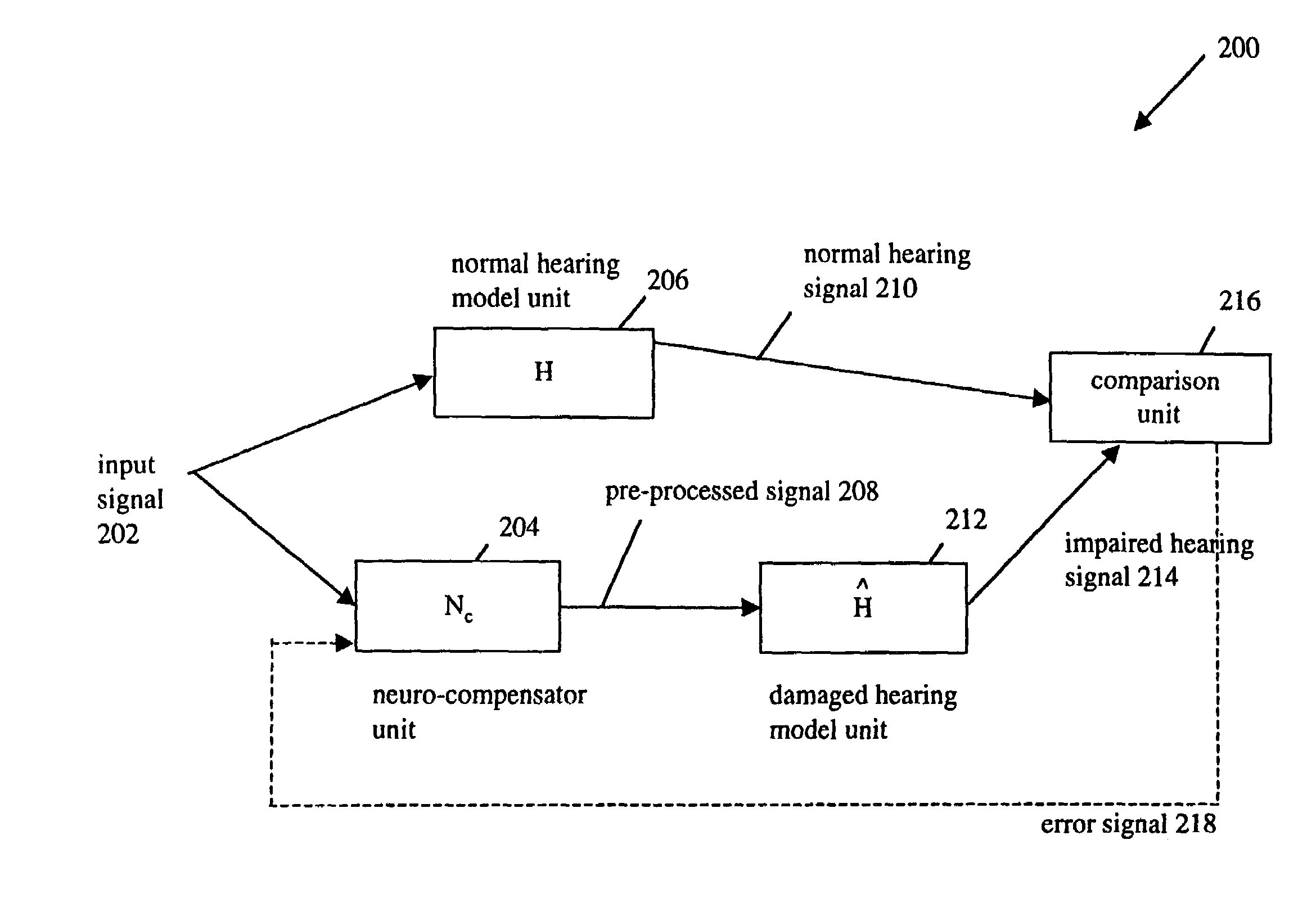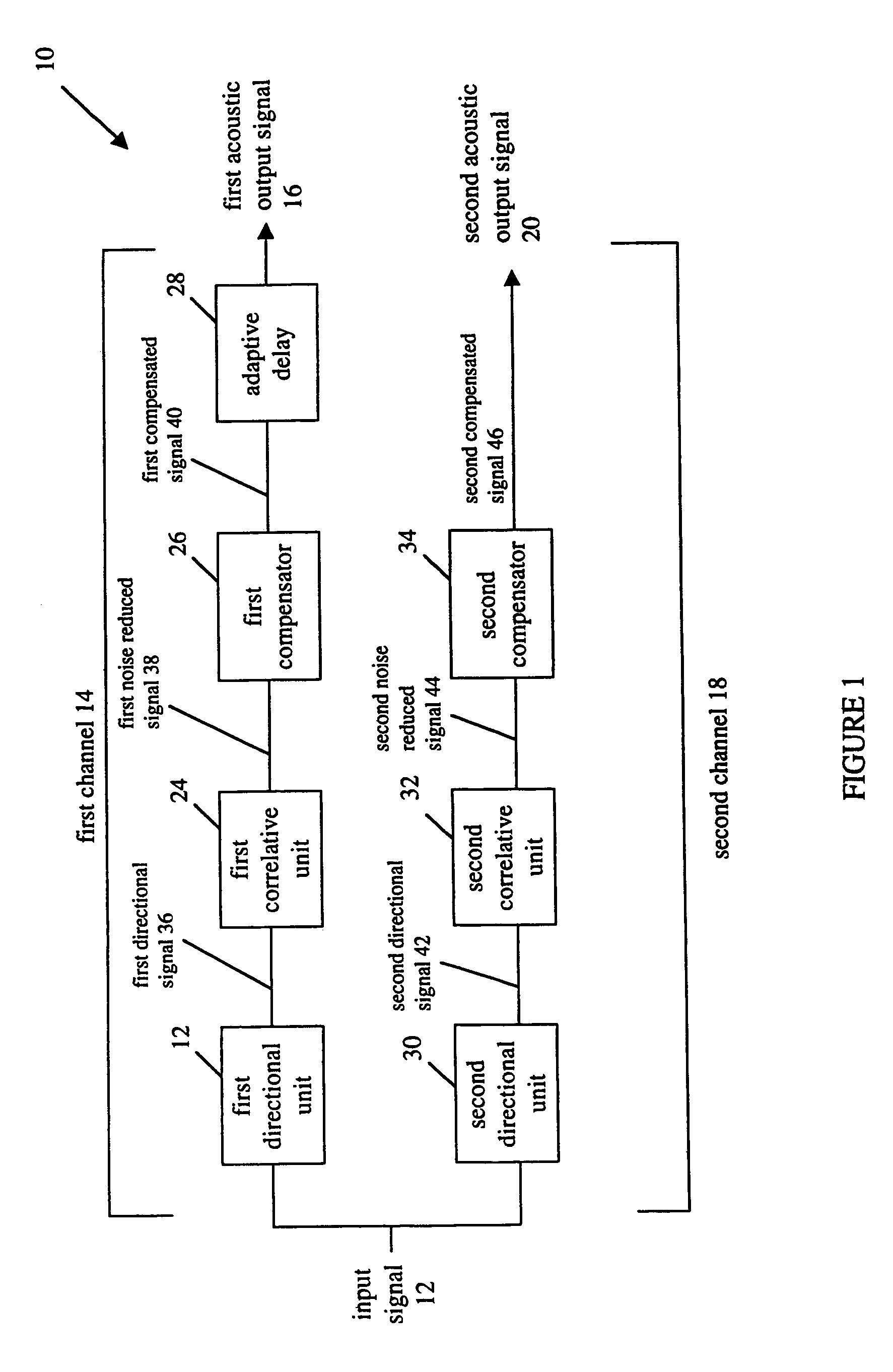Binaural adaptive hearing aid
a hearing aid and binaural technology, applied in the field of hearing aid systems, can solve the problems of inability to understand speech in noise, current hearing aid technology does not make full use of this information, and the mechanisms underlying the more prevalent types of impairment due to hair cell loss were not well understood, so as to restore normal neural function
- Summary
- Abstract
- Description
- Claims
- Application Information
AI Technical Summary
Problems solved by technology
Method used
Image
Examples
Embodiment Construction
[0035]The auditory system of a hearing-impaired person is viewed as an impaired dual communication channel. The dual communication channel begins with some acoustic information source, goes through a multipath channel and is received at the two ears. The signals are processed by the auditory periphery before being coded into a neural representation and being passed to the central auditory system. The two signals go through the left and right auditory midbrain (cochlear nucleus, superior olive, inferior colliculus and medial geniculate body) to the auditory cortex and higher association areas, where they are integrated, resulting in perception. Accordingly, the dual channels correspond to the left and right auditory periphery and central channels of the hearing impaired person. There are three possibilities since either one or both of these channels may be damaged. In addition, the channels may be damaged in different ways (i.e. to a different extent and in different frequency region...
PUM
 Login to View More
Login to View More Abstract
Description
Claims
Application Information
 Login to View More
Login to View More - R&D
- Intellectual Property
- Life Sciences
- Materials
- Tech Scout
- Unparalleled Data Quality
- Higher Quality Content
- 60% Fewer Hallucinations
Browse by: Latest US Patents, China's latest patents, Technical Efficacy Thesaurus, Application Domain, Technology Topic, Popular Technical Reports.
© 2025 PatSnap. All rights reserved.Legal|Privacy policy|Modern Slavery Act Transparency Statement|Sitemap|About US| Contact US: help@patsnap.com



